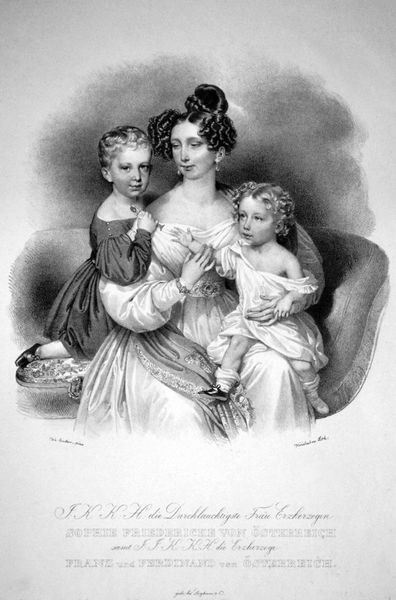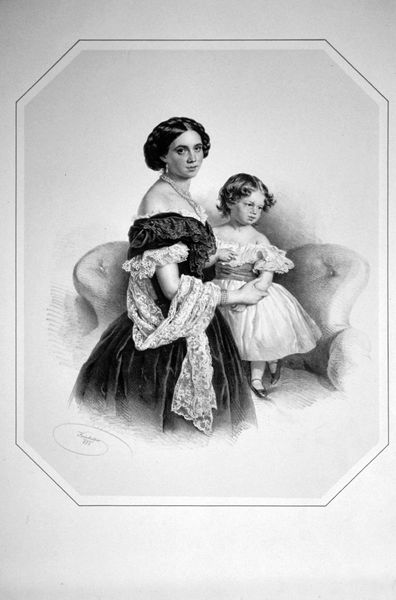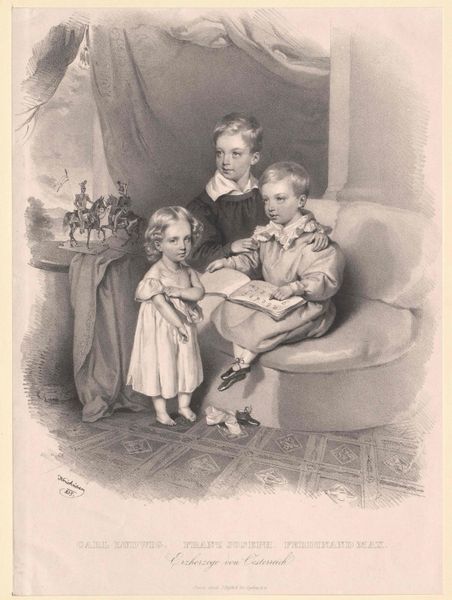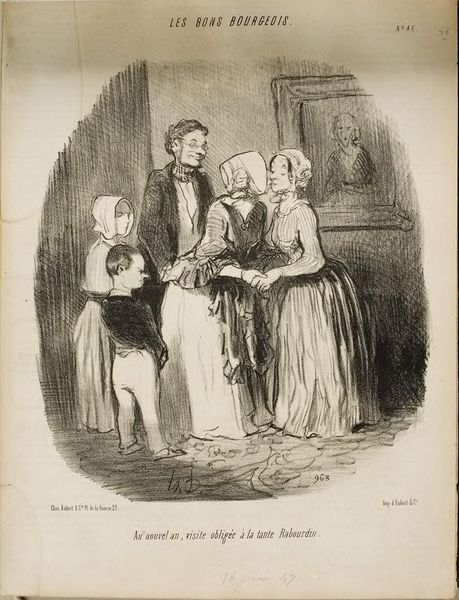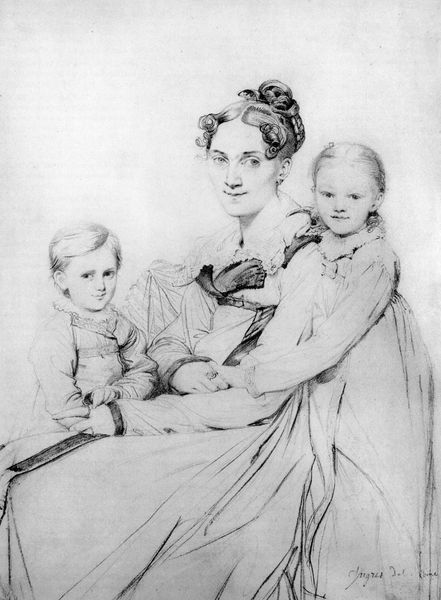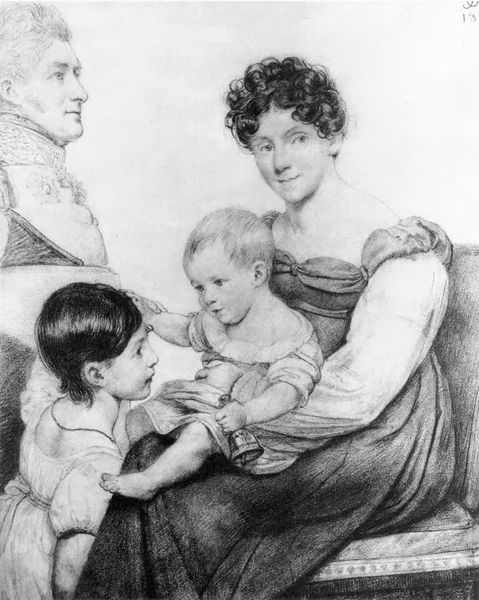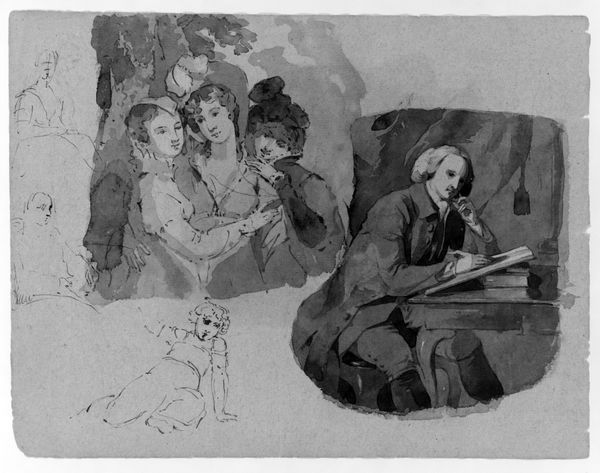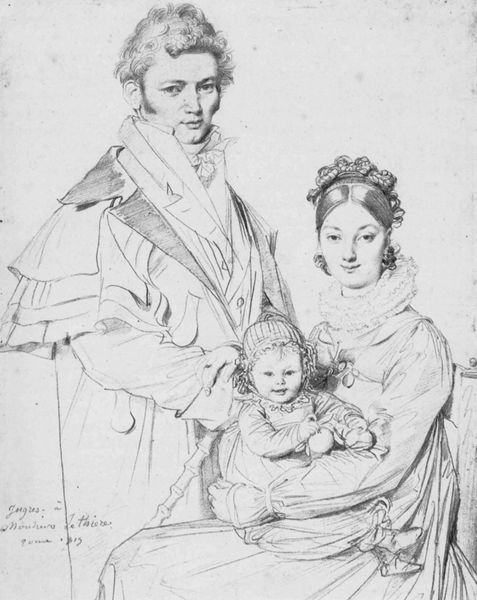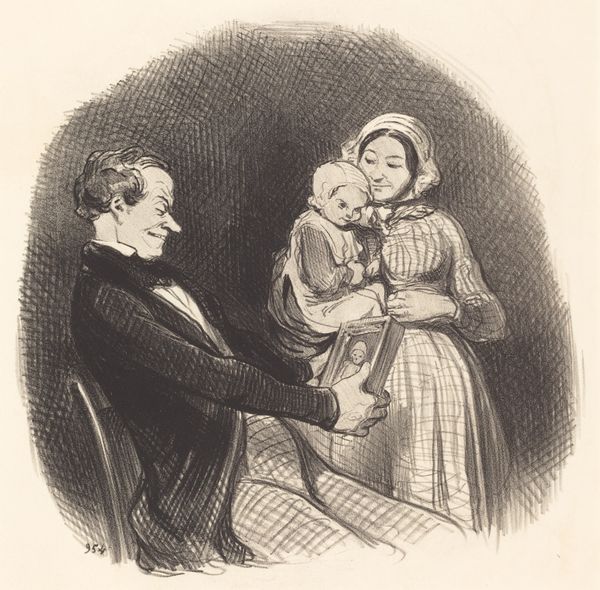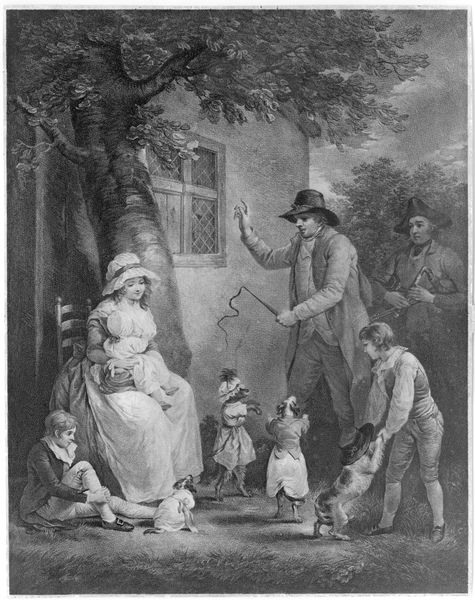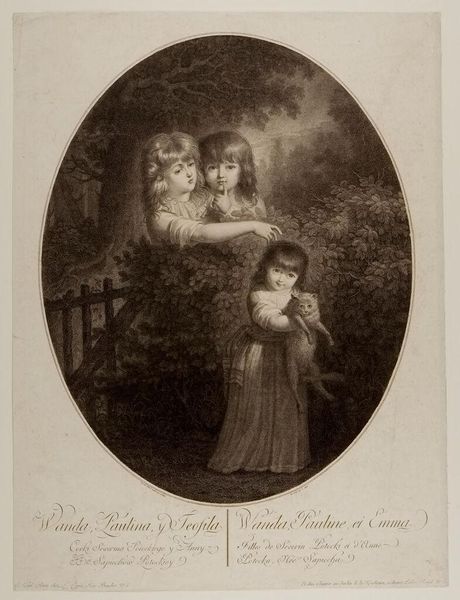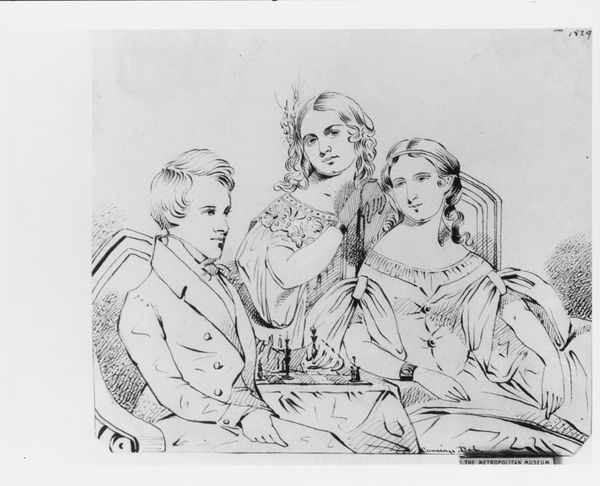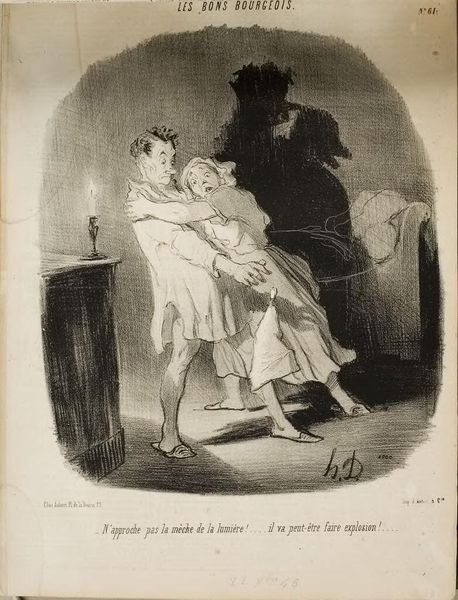
drawing, pencil, graphite
#
portrait
#
drawing
#
charcoal drawing
#
romanticism
#
black and white
#
pencil
#
graphite
#
portrait drawing
Copyright: Public domain
Curator: Here we have Josef Kriehuber's "Aloisia Eleonore Schönburg-Hartstein With children", created in 1841 using pencil, graphite, and charcoal. Editor: It's a rather stark portrait at first glance, but undeniably elegant in its composition, particularly in the rendering of textures. Look at the folds of the mother’s dress and the plushness of the chair versus the crisp lines of the children’s clothing. Curator: I agree. I find myself focusing on what these stark lines represent – the constraints and class structure that defined this family's reality. Aloisia, nestled into a lavish chair with her two children, is bound by social expectation and domestic obligation. Her role is carefully constructed for public consumption, much like the portrait itself. Editor: Yes, and consider the contrast between the children; the younger one is relaxed, held close to the mother, and the older boy sits rigidly, mirroring perhaps the expectations of him. Curator: Exactly. And let’s think about the material labor involved. Kriehuber was a sought-after lithographer, producing portraits for the rising middle class. The act of creating such images became a business, catering to a specific consumer desire to display wealth and status. Editor: Indeed. However, the medium is noteworthy: a drawing made with graphite, pencil, and charcoal. There's a delicacy here, an ephemeral quality, despite the rigidity of the subject matter. See how Kriehuber uses light and shadow to model the forms and create depth. Curator: A skill honed to maximize the profitability of printmaking for widespread circulation. The value of this work wasn't just aesthetic; it was social and economic. These portraits offered social mobility by image, allowing a family to solidify its identity within a changing societal structure. Editor: The softness in the mother's expression and the trusting gaze of the child, achieved through such controlled manipulation of material, suggests an intimacy that transcends mere social documentation. It hints at an emotional landscape. Curator: Perhaps, but that landscape is inherently shaped by societal pressures. Every stroke, every shadow, becomes part of a carefully crafted narrative intended to project power and influence through representation. Editor: It's the skillful balancing act between representation and evocation that makes it intriguing. A work that speaks to both its era and our own, inviting speculation on what portraiture can reveal.
Comments
No comments
Be the first to comment and join the conversation on the ultimate creative platform.
